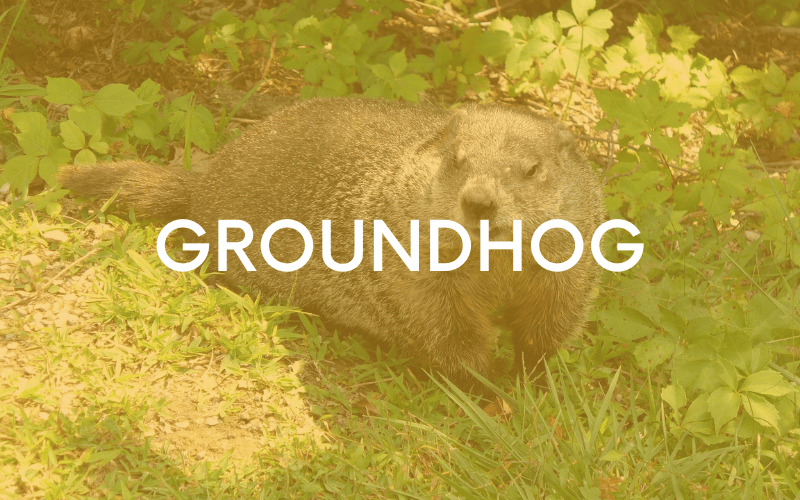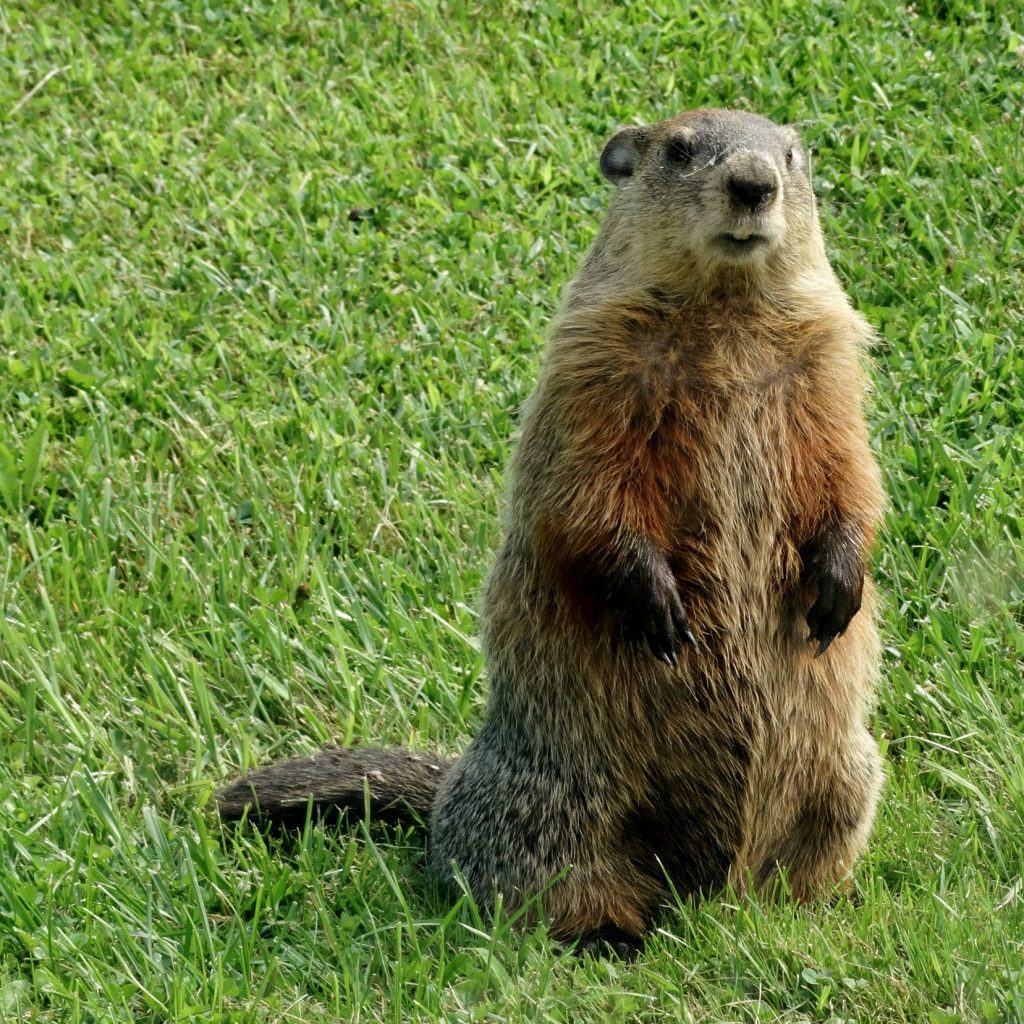
Groundhog Control
For Immediate Help

Groundhogs (also called Woodchucks, or Whistle Pigs) are a large species of rodent found exclusively in North America. They have long been known to be a terrible nuisance for farmers, due to their well-documented habit of devouring a wide variety of crops. In addition, as burrowing animals, their tunnels can wreck yards and undermine foundations. Because of all of this, a groundhog is just not a creature you want anywhere near your property (unless, of course, you find their whistling so compelling that you’re willing to put up with everything else).
Groundhog Removal

To solve a problem, you must figure out why you have the problem in the first place. If you have a woodchuck in your yard, also called a groundhog, it’s likely because they have found a food supply. Woodchucks are like most wildlife. They are searching for food, water, and shelter.
Woodchucks hibernate during the winter. During the spring, summer, and fall, you will find them to be very active during the day. They don’t stay out all day, however. Early mornings and evenings are when they do most of their hunting for food.
Inspection
Woodchucks dig tunnels underground and use them to travel to various food sources. They will dig tunnels in fields, under homes, driveways, roads, sheds, barns, and many other places that make your property unsafe.
Homeowners rarely see woodchuck scat because they typically build extraordinary chambers underground where they will go to the bathroom.
Groundhog Trapping
We do not remove groundhogs during their hibernation period because there will likely be young present. Live trapping and relocation might be an option. It is important to set traps at strategic places in burrow entrances.
Exclusion and Repair
Many wildlife experts install fencing around garden crops, and they know the fence must go far enough underground that the groundhog cannot dig underneath it. You may also choose electric fencing to deter nuisance wildlife.
The most important steps include habitat modification and eliminating food and water resources. Groundhogs like to travel in high grass. Therefore, keeping your lawn and fields well-manicured makes them less attractive to groundhogs. The pros at Critter Control can show you how to properly close burrows while a groundhog is out roaming around, preventing it from using that tunnel.
Signs of Groundhog
Unless they’re raising young, groundhogs live alone. Groundhog burrows are the clearest sign of a groundhog problem. Their burrows feature one main entrance hole and up to four other exits, usually located near trees, walls, or fences. Each opening is between 10 and 12 inches in diameter. As woodchuck offspring prepare to leave the nest, additional holes will appear in lawns. These “practice” holes are shallow, much smaller in diameter, and plentiful in number.
Groundhogs vs. Moles
Although moles and gophers can damage lawns and gardens with tunneling and foraging, their diets can differentiate them. Groundhogs are herbivores that graze on grasses, clover, dandelions, and fruits and vegetables. Moles are insectivores eating the worms, grubs, and other insects found in the soil. So, while they might damage and uproot plants as they tunnel, they are not eating them.
Groundhogs vs. Gophers
Both gophers and groundhogs have brownish fur and large front teeth that help them dig. Groundhogs are larger and stouter. Although both are tunnel-creating rodents and herbivores, groundhogs are surface eaters that graze on grasses, clover, dandelions, and fruits and vegetables. Gophers feed on the parts of the plant that are underground, such as roots and tubers

Groundhog Noises
Groundhogs are usually silent to avoid detection. They can be quite vocal when defending themselves or communicating.
Vocal Noises
Groundhogs can make sounds like hissing, shrieking, whistling, grunting, barking, and chirping.
Movement Noise
You will not hear a groundhog moving in its burrow or digging new holes. A groundhog will make noises with their teeth that can be described as clicking or chattering.

Groundhog Burrows
Birds look for places offering ample shelter from the elements of weather, typically high off the ground to protect their young. While birds typically choose trees, shrubs, and other natural sights to build nests, some bird species tend to build them in the crevices of homes, buildings, and bridges. Bird nests come in many shapes and sizes.
Each species has unique methods for choosing a suitable location and constructing nests to house its young. Some species do not build nests at all and instead lay their eggs in the nests of other birds. Those that do build nests generally construct a shell of sturdy materials like sticks, plant stems, and grasses held together with mud. The interior is lined with soft materials like moss, animal fur, dried leaves, string, or bits of cloth.
Groundhog Damage
Groundhog burrows can cause extensive property damage. The elaborate tunnels can damage watering systems and wiring. heir burrows can affect the structural integrity of fencing, sheds, and home foundations, depending on their placement. Groundhogs feast on plants found in gardens, flowers, and grasses. They can carry parasites like ticks and fleas.

Groundhog Diseases
Of all the rodents, groundhogs are most likely to have rabies. Rabid groundhogs behave erratically, foam at the mouth, and are much less fearful of humans than healthy woodchucks, The viral disease is transmitted via bite or scratch, so any encounters with aggressive groundhogs resulting in injury should be followed up with a visit to a medical professional.
Additionally, though rare, groundhogs can carry tularemia. Symptoms of this disease include fever, chills, headache, and diarrhea. Woodchucks can also carry groundhog ticks, which spread Lyme disease to humans.